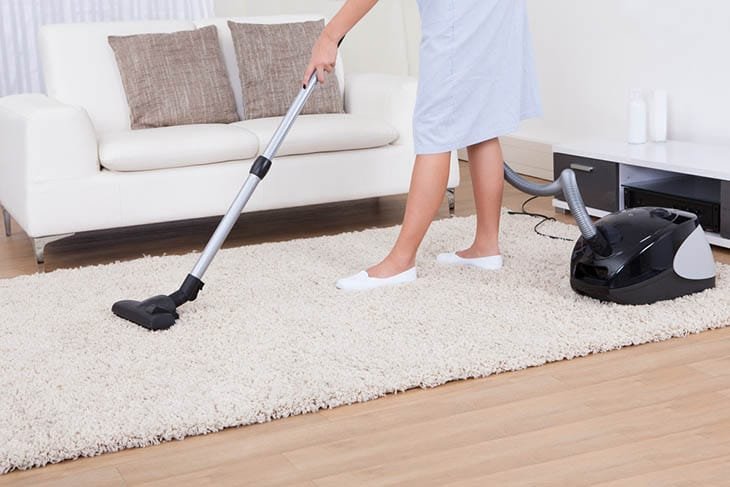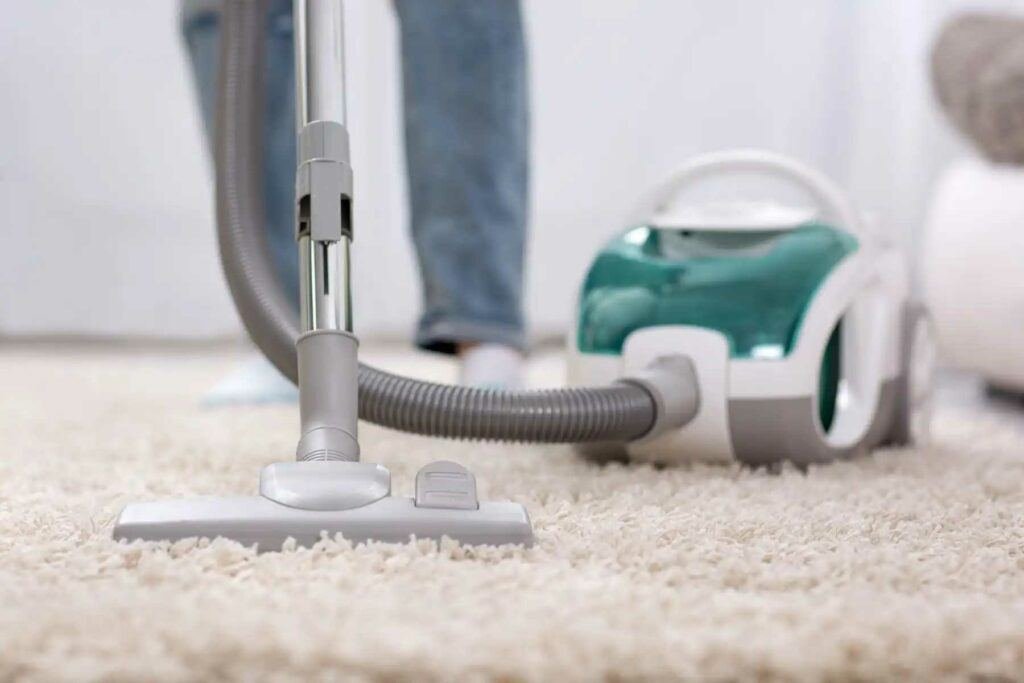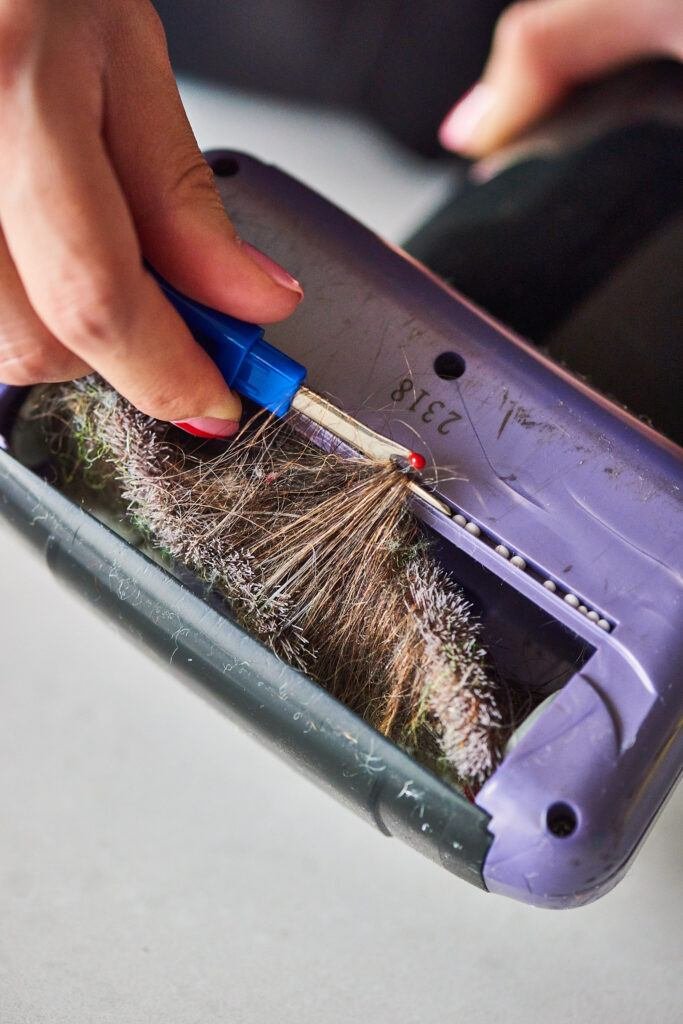Vacuum cleaners are essential cleaning tools for every home. Efficient and effective, vacuum cleaners remove dust, debris, and dirt in minutes. These cleaning devices are one of the hardest workers in our homes. But like every other hard worker, vacuum cleaners need proper maintenance to function optimally. So, how to maintain the vacuum cleaner for optimal performance and durability? Keep reading to find out.

Treat vacuum cord with care, empty the dirtbag regularly, throw away paper bags after used to avoid damage, check floor heads, and wash reusable filters before reusing them. For repairs, we recommend consulting a professional to check your unit. Avoid repairing vacuum cleaners yourself if you lack the proper technical knowledge as it could cause extensive damage to the components. Manufacturers have technical support that will attend to your needs according to your warranty.
Soft maintenance after each vacuum cleaning extends the lifespan of vacuum cleaners tremendously. However, manufacturers have recommended maintenance frequency for every model. Nonetheless, there are general maintenance guides to follow to keep your vacuum cleaner working optimally all the time.
How to Maintain Vacuum Dirtbag For Optimal Performance
The simplest vacuum cleaner maintenance to execute is washing and replacing the dirtbag. While advanced vacuums are bagless, high suction multi-purpose vacuum cleaners trap debris into detachable bags that require frequent disposal.
Suction power is reduced when the disposal bag is full, so we advise homeowners to dispose of the content of their vacuum bags when half full to maintain consistent suction power across all floor types. Vacuuming with a full dirtbag may also cause debris to spill on your floor or prevent the vacuum from sucking debris and dust.

While Bagged vacuums have high suction, bagless vacuums have the advantage of indicating the quantity of debris in the canister. This helps to avoid all the problems with reduced suction and facilities quick dirt disposal.
How to Clean your Vacuum Filters
The vacuum filter is responsible for removing harmful particles such as bacteria and allergens to help protect the health of homeowners and occupants with allergies and reactions. HEPA filter removes 99.97% of all particles from the air and vacuumed debris. Filters also make sure that the debris is properly trapped and doesn’t spill onto your floor, causing you to vacuum again.
Properly maintaining a vacuum filter will tremendously improve the efficiency of your vacuum cleaner. So how do you maintain a vacuum filter? Some vacuum filers are disposable after several usages, as recommended by the manufacturer while others are recyclable and washable for reuse.
Check out the material of your vacuum filter to learn its maintenance requirements. Rinse foam and plastic filters and dispose of paper filters.
How To Clean Vacuum Brush Roll
Vacuum brushes help to agitate the floor surface to free up debris for the machine to easily pick up the dirt and debris on the floor. Most advanced vacuums have more than one brush roll, located under the vacuum cleaner, and held by a plate.
A faulty or clogged vacuum brush roll makes it difficult for your vacuum cleaner to suck up debris, thereby leaving your home dirty even after a session of intense vacuuming. If you’re experiencing this, then don’t panic. The solution is simple as maintenance can be executed by just anyone without any form of technical expertise.

First, you need to remove the plate attached to the brush before removing the brush rolls from the slots on both sides. Using scissors, remove any tangled hair or debris from the brush to return it to full capacity. Before fixing the brush rolls back, we recommend checking for other damaged components that may require replacement.
How To Clean Vacuum Belt
While maintaining the vacuum brush roll, you should also look at the belt to ensure that it is in good working condition. The vacuum belt is responsible for spinning the brush rolls and in some models, is responsible for spinning the wheels.
As you can see, a faulty vacuum belt will drastically reduce the efficiency of your vacuum cleaner and may even cause some components to spot functioning completely.
A healthy vacuum belt should be stretched out ans frayed. If you notice wear and tear, or sagging cracks, replace the belt immediately to avoid further damage to other components of your vacuum cleaner. Replacing the vacuum belt once a year ensures optimal performance. However, replacement frequency varies depending on usage.
If you use your vacuum daily, then consider replacement twice a year or more. Check the manufacturer’s manual for the recommended replacement belt.
How To Properly Attach Vacuum Bag
Each model has a corresponding dirtbag that works optimally only with that vacuum cleaner. Check with the manufacturer for the recommended dirtbag to avoid buying oversized and incompatible bags.
Properly attached dirtbags are important for adequately trapping dust and debris. While various models have different modes of dirtbag attachments, make sure the bag opening is secured to the vacuum’s nozzle.
Tightly secure it with a hook or holder to prevent dust and debris from spilling all over your floor. Poorly secured dirtbags prevent debris from entering the bag, thereby overrunning your vacuum with debris that would cause damage to the components.
If this happens, remove all the components of your vacuum cleaner and clean them. Attaching a bag to a vacuum cleaner is fairly simple and can be done by just anyone. However, if you’re having trouble, consult your manufacturer’s manual. We also recommend stocking up compatible bag types.
How To Maintain Bagless Vacuum Cleaners
Advanced and more sophisticated vacuum cleaners provide better maneuverability and flexibility for homeowners. Lightweight, bagless, and cordless, they feature everything a modern home appliance should have.
Their popularity amongst homeowners has surged in the past years, but how do you maintain a bagless vacuum? Empty the canister or receptacle by monitoring the marker on the vacuum cleaner before and after vacuuming your home. Just like bagged vacuums, suction is also reduced in bagless vacuums when the canister is full.
After emptying the canister, clean with a microfiber cloth to remove residual dust and debris. You can perform a thorough wash with soap and water. Allow it to dry completely before returning to the vacuum. Clean or replace the filter accordingly.
Replace vacuum cleaner
Maintaining each component of your vacuum cleaner is necessary to maximum suction and optimal vacuum performance. Certain maintenance can be carried out at home while others require the expertise of a professional.
Check to see if you’re still under warranty to enjoy free workmanship and reduced replacement costs. Repairs are usually inexpensive. However, repeated maintenance overwhelms vacuum motor and other vacuum components, which may affect performance.
Replacing the entire vacuum cleaner with a new one is recommended for optimal and quick vacuuming. Newer advanced models have more features and attachments to facilitate better and improved vacuuming.
Tips For Maintaining Your Vacuum Cleaner
Unplug the vacuum cleaner from the power source before removing the individual components to avoid physical injury and damage to the vacuum cleaner. If your vacuum cleaner is cordless, then make sure it is powered off before you start maintenance.
Overheating may cause your vacuum cleaner to stop working while vacuuming. Instead of powering it back on, unplug and check for any damaged components that need repair or replacement.
Overheating might be an indication that your vacuum cleaner simply needs a break or replacement. If you can’t figure it out yourself, then contact your manufacturer for professional advice.
Check your vacuum cleaner after every used to ensure that all the components are in good working condition. Most advanced vacuums have low noise, so increased noise while vacuuming is a sign of a vacuum problem.
Vacuum maintenance is important for keeping your vacuum cleaner in good condition. Empty and Clean the bags regularly, replace filters, check the brush rollers and plate, and follow the instructions and tips from the manufacturer.
